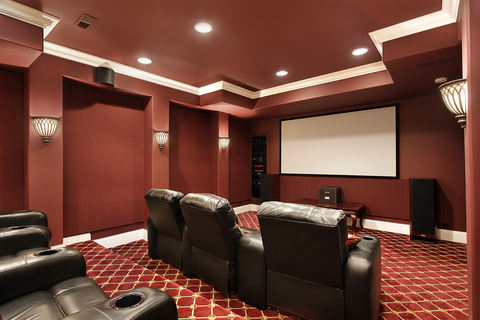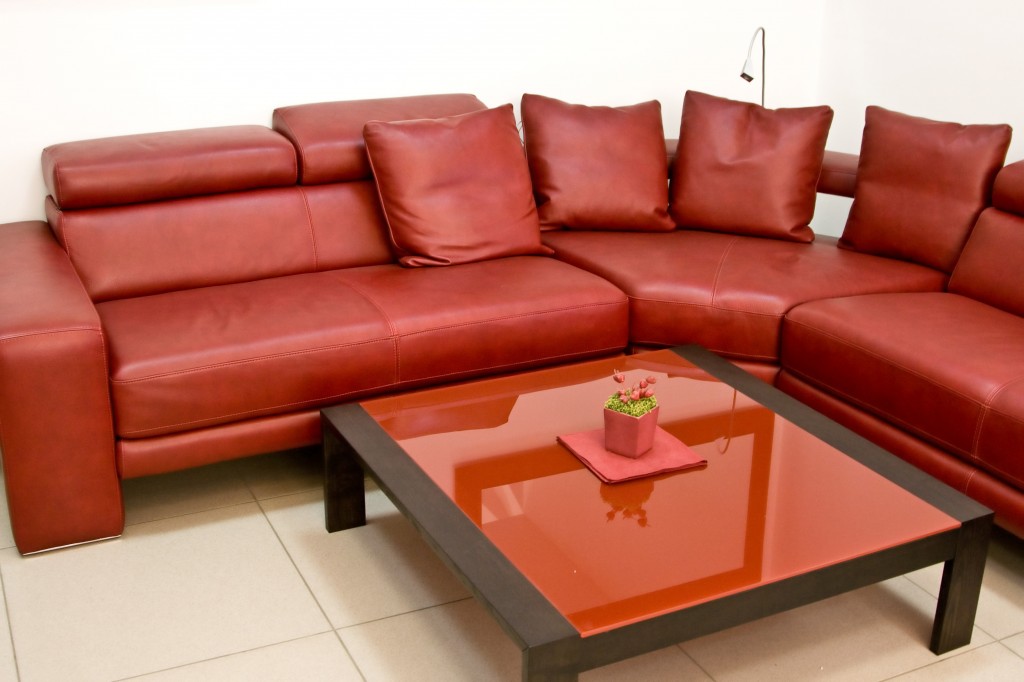Having a fireplace in your living room can be a great way to warm the room up, create a cozy atmosphere, and stay comfortable in the home. Along with this, your fireplace can be an amazing feature in your living room, with lots of different designs and looks to choose from. Whether you have a log burner, an electric fire, or a gas fire, it can quickly become a key focal point in your room along with having practical benefits.
However, for many homeowners, especially for those who have a small living room or a living room with an unusual layout, arranging the living room furniture so that the fireplace and the TV don’t visually clash can be tricky. There are a few main things to consider when doing this, including the design and layout of the room, and the angle of the TV screen. Keep reading for some ideas you might like on arranging your living room with a fireplace and a TV.
Choose One Wall as the Feature Wall
For many homeowners, the fireplace wall is an obvious choice for a feature wall. However, a TV can also take up a full wall in the room, especially if it’s a large screen. Depending on the fireplace you have and how you want your living room to look, it’s a good idea to pick either one or the other to be your feature wall. If you have a traditional chimney breast and fireplace with alcoves on either side, then this is usually the most obvious choice for the feature. On another wall, you can then place a TV stand and your TV. To keep the attention on the feature wall, keep the wall that the TV is against as simple and clutter-free as possible. Add more to the feature wall to make it stand out in the room, such as pictures or shelves in the alcoves, a large mirror or artwork above the fireplace, or paint in a contrasting color.
Utilize the Alcoves
If you have a traditional fireplace with a chimney breast and alcoves in your living room, then a common option is to utilize the alcove space when it comes to where your TV is situated. This is a popular choice as alcoves are often too small for other types of living room furniture, and it’s often easy to watch TV from wherever you are sitting in the room when it is placed here. That being said, it’s important to consider the size of your alcove before placing the TV here. If you have a large TV, then it might look silly if it’s bigger than the alcove space, or cluttered if it is on a stand. One option is to attach the TV in the alcove to a wall mount that offers full range of motion.
Consider a Media Wall
Media walls are one of the biggest trends in home décor right now, and for good reason. They can look amazing and allow you to combine both your fireplace and the TV on one wall. You can create a media wall in a living room that has an existing chimney breast and alcoves. Most of the time, this is done by building shelves into the alcoves and a recess for the TV and fireplace. Electric fireplaces are the best choice for a media wall, since the heat is blown out of the bottom, therefore they are less likely to cause any damage to the TV hung above. Along with this, many electric fires have the option to turn on the fire effect or lights without any heat, making it easy to create a comfortable ambience in the room.
Wall Mount Your TV
Wall mounting your TV is a good option whether you want it to be on the same wall as the fireplace or on a different wall. Wall mounting your TV above the fireplace can be a great option for smaller living rooms as it utilizes the space as much as possible, allowing more room for other furniture like armchairs from VidaXL. However, there are a few things to consider before wall mounting the TV above the fireplace. First of all, consider the type of fireplace you have and how much heat it gives off. A mantle is usually the best way to block heat from the fireplace from reaching and causing damage to the TV. Another factor to consider is the height. It’s worth avoiding mounting your TV above the fireplace if it’s very high up, as this will be uncomfortable to watch.
Fireplace TV Stands
If you have a newer home that does not have a chimney breast or fireplace but want the coziness and ambience of a fireplace in the living room, then a fireplace TV stand can be an ideal solution. These are electric fireplaces that also double as a TV stand. They include shelves for storage and can be placed along any free wall in the room, allowing you to enjoy a cozy and warming fireplace while having the TV on the top.
Hiding the TV
If you want your fireplace to be the main focus point in the room and the TV to barely be noticeable unless you are watching it, then there are several options to consider when it comes to hiding the TV in plain sight. Some TVs come with the option to add artwork screensavers to make it look like any regular picture hanging on the wall, which can be worth considering. A TV frame might also be worth considering if you want your TV to look more like artwork when you’re not watching a movie or show. You can make a basic TV frame if you are a creative person who enjoys DIY projects. Some TVs also have TV frames designed for that model that you can purchase and use. This can be an ideal choice whether you decide to wall mount your TV above the fireplace or on another wall.
A TV and a fireplace in the same living room can definitely look great with the right layout, even in small or unusually shaped spaces.
Tags: big screen TV, gas fireplace, layout, living room


